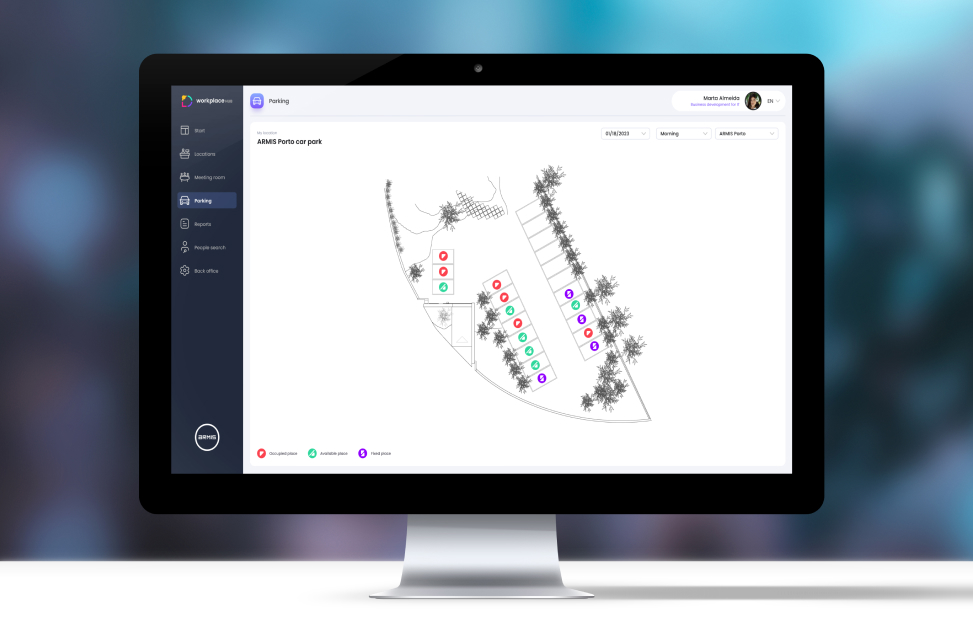
The Power of Identity and Access Management for Corporate Information Security
 blog
blog
Discover the power of Identity and Access Management and its importance for the protection of devices, information and employee identity.
Whether physically or remotely, Identity and Access Management becomes vital for managing the security of any organization and its data. Exploitation of vulnerabilities has become more and more frequent with the increase of telecommuting. Unknowingly, the employees themselves have become one of the main access doors to cyberattacks.
This work model is expected to become a trend, and as such, without a strategy coupled with access management, employees will continue to be a prime target for cybersecurity crimes.
In the first half of 2020 (considering half a pandemic situation period), data breaches exposed 36 billion pieces of data worldwide, according to RiskBased. Also, IBM reveals that the average time to identify a security breach was 207 days in the year 2020.
The corporate information protection strategy, combined with the implementation of identity management solutions, requires, nowadays, an approach that contemplates all associated verticals, namely: user identity protection (to ensure that whoever logs in is really the owner); device protection (through tools that allow monitoring and validation of workstation processes), information protection (by identifying sensitive and critical information for the organization) and application protection (through application development strategies in "low code" or even "no code" formats).
How can you define an information access protection strategy?
Discover the power of Identity and Access Management and its importance for the protection of devices, information and employee identity.
What is Identity and Access Management?
Identity and Access Management (IAM) is a process of organization and administration of relationships between people and critical information assets, i.e. between employees and the company, which allows managing user access.
In order to define compliance standards, through the implementation of security policies, only authorized users have the necessary access permissions. As such, these solutions integrate with various systems, centralizing the access authorization process, by defining different types of access controls and mechanisms, such as the implementation of more secure authentication processes, namely Single Sign-on, Multi-factor Authentication and other Cloud Services available and that easily integrate with the applications.
An Identity and Access Management strategy is mostly based on the secure connection between people and information, resulting in increased employee productivity, as well as more secure and agile access to data.
What are the 5 challenges of IAM?
Identity and access management strengthens the organization's information security by preventing fraud attempts and compromise of user identity and loss of confidential data belonging to the organization.
Number of identities to be managed
Typically, organizations access multiple services, and therefore multiple data sources. If each service provides an address directory, the task of inventorying and managing users becomes challenging. Thus, the task of inventorying accesses becomes the first challenge when implementing a cohesive and structured Identity and Access Management strategy. Besides the creation of standards for the assignment of access, it is imperative to define strategies for the identification of users and their accesses in order to create access "profiling", that is, to create a "standard" in the access to "who" accesses "what". The automation of this process is fundamental, in order to make the management of accesses easier, be it derived from the entrance of new employees, with the attribution of accesses in a "standardized" way, or by the management of exits. The synchronization of access management through connectors (which integrate with existing "identity" repositories) makes the management centralized, and therefore more agile and efficient.
Identity management on multiple devices
The number of devices that users use to develop professional activities has grown substantially. It is recurrent to access applications not only through the workstation (laptop or desktop), but also through the tablet or smartphone. Therefore, it is imperative that the identity protection strategy defines and supports organizations in identifying which devices can access which information.
Privacy Management
Defining the achievement of compliance metrics based on privacy rules is challenging. Organizations have requirements for each profile present in the company, such as access to user groups with specific computing needs (developers, designers), or external entities with service administration needs, can currently be managed with distinct access rules, since the accesses assigned tend to be in a "JIT" (Just in time) format. Thus, it is possible to define "Just in time access" methodologies for certain access profiles so that high privilege access is temporary (with mandatory renewals), secure (through additional factors such as MFA) and audited (through logging on the platform).
Access risk definition
Being supported by platforms that constantly audit the parameters on access to the organization's data and applications sustainably leverages user identity protection. It is currently possible to have automations to audit users that define access patterns. In case of login processes from "external" sources, automation allows blocking access to the corporate account, or requiring a password change.
Access Security
Security in the login process is the first step of interaction between the user and the information. Thus, the definition of more secure authentication mechanisms is imperative, namely, Passwordless authentication, Multi-factor authentication or with support for additional devices.
How to implement this process?
In order to protect your data and your organization, there are critical steps in the Identity and Access Management process: consulting, implementation, process definition and service management.
In the IAM process, Azure Active Directory is a solution that allows the organization to manage, control and monitor access to important company resources and information through hybrid integration. This reduces the likelihood of access by malicious code or unauthorized users that could impact sensitive resources and information leakage actions.
This Identity Management solution provides provisioning and de-provisioning, synchronization, user profile management, group management, credential management, self-service certificate management, profile management, and reporting tools.
Protect your data effectively.
Talk to us
Share this article:
Prepare your company and your employees for the future. Contact us!




